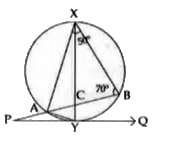If distances of a point (x, y) are equidistant from (a +b, b-a) and (a- b, a + b), prove that bx = ay.Solution in Kannada
The correct Answer is:bx = ay
Step by step video, text & image solution for If distances of a point (x, y) are equidistant from (a +b, b-a) and (a- b, a + b), prove that bx = ay. by Maths experts to help you in doubts & scoring excellent marks in Class 10 exams.
Updated on:21/07/2023Topper's Solved these Questions
- CO-ORDINATE GEOMETRYBOOK - ZEN PUBLICATIONCHAPTER - CO-ORDINATE GEOMETRYEXERCISE - TEXTUAL EXERCISE EXERCISE 7.1
9 Videos
- CO-ORDINATE GEOMETRYBOOK - ZEN PUBLICATIONCHAPTER - CO-ORDINATE GEOMETRYEXERCISE - TEXTUAL EXERCISE EXERCISE 7.2
10 Videos
- CIRCLESBOOK - ZEN PUBLICATIONCHAPTER - CIRCLESEXERCISE - ZEN ADDITIONAL QUESTIONS ( HOT [HIGHER ORDER THINKING SKILLS] - QUESTIONS) (IIT AND IMO)
9 Videos
- CONSTRUCTIONSBOOK - ZEN PUBLICATIONCHAPTER - CONSTRUCTIONSEXERCISE - ZEN ADDITIONAL QUESTIONS ( HOTS [HIGHER ORDER THINKING SKILLS] - QUESTIONS) IIT /OLYMPIAD/ IMO
5 Videos
Similar Questions
Find the distance between the following pairs of points :
(2,3), (4, 1)
View SolutionFind the corrdinates of the point which divides the join of (-1, 7) and (4, -3) into the ratio 2 : 3 internally.
View SolutionIn the adjoining figure, XY is a diameter of the circle and PQ is a tangent to the circle at Y. Given that ⌊AXB=50∘ and ⌊ABX=70∘, calculate ⌊BAY and ⌊APY.

View SolutionGiven below are the steps of construction of a pair of tangents to a circle of radius 4 cm from a point on the concentric circle of radius 6 cm. Find which of the following steps is wrong.
(P) Step 1: Take a point O on the plane paper and draw a circle of radius OA = 4 cm. Also draw a concentric circle of radius OB = 6 cm.
(Q) Step 2: Find the midpoint C of OB and draw a circle of radius BA= AO. Suppose this circle intersects the circle of radius 4 cm at P and Q.
(R) Step 3: Join BP and BQ to get the desired tangents.
View SolutionIf the point P(x,y) is equidistant from the points A(a+b,b-a) and B(a-b,a+b). Prove that bx=ay.
View SolutionIf the point (x,y) is equidistant from the points (a+b,b−a) and (a−b,a+b) , prove that bx=ay
View SolutionIf the point P(x,y) be equidistant from the points A(a+b,b-a) and B(a-b,a+b), then prove that bx=ay
View SolutionIf the point P(x,y) be equidistant from the points A(a+b,b-a) and B(a-b,a+b), then prove that bx=ay
View SolutionIf the point (x;y) is equidistant from the points (a+b;b−a) and (a−b;a+b) prove that bx=ay
View SolutionIf the point (x, y) is equidistant from the points (a+b, b-a) and (a-b, a+b), then prove that bx=ay.
View Solution(i) If the point (x, y) is equidistant from the points (a+b, b-a) and (a-b, a+b), prove that bx = ay.
(ii) If the distances of P(x, y) from A(5, 1) and B(-1, 5) are equal then prove that 3x =2y.
View Solutionयदि बिन्दु P(x,y) बिन्दुओ A(a+b,b−a) और B(a−b,a+b) से समदूरस्थ है , तो सिद्ध कीजिए कि bx=ay.
View Solutionयदि बिन्दु (x, y) दो बिन्दुओं (a+b,b−a) और (a−b),a+b) से समान दूरी पर हों , तो दर्शाइए कि bx=ay होगा ।
View Solutionयदि बिंदु (x, y) बिन्दुओ (a + b, b - a) और (a - b, a + b) से समान दूरी पर स्थित है, तो सिध्द कीजिए की bx = ay.
View SolutionIf the point (x,y) be equidistant from the points (a+b,b-a) and (a-b,a+b) , prove that bx =ay .
View Solution
